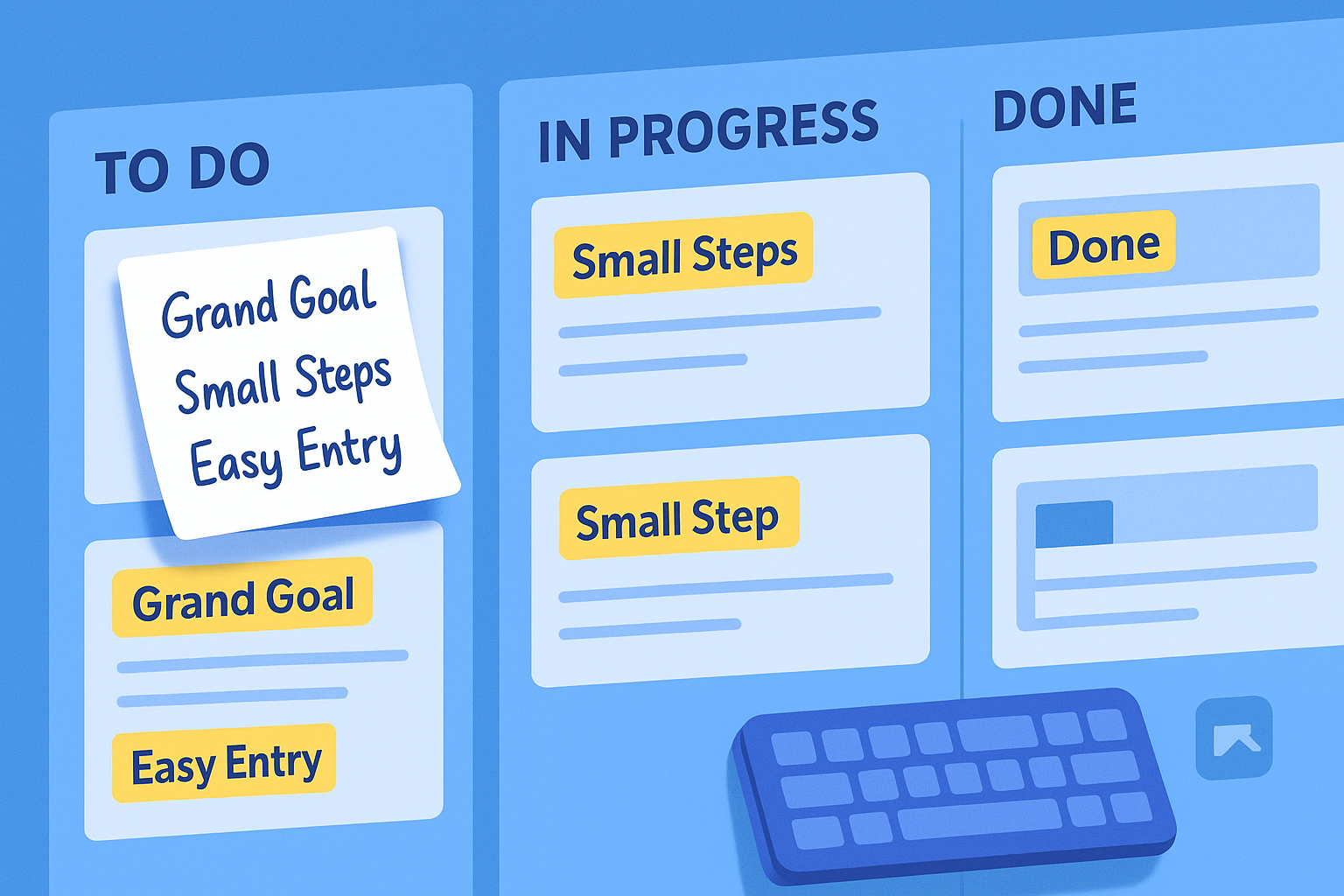· 5 min read
Text Templates For Trello
A set of thinking tools and text snippets I use to bring clarity at every stage of my workflow — from arranging ideas to asserting outcomes.

My previous post presented my Trello board structure and card structure. This post will describe the template for text content inside those cards.
The Quest for Clarity
I used to have a problem. My Trello cards would stall. They’d move from “To Do” to “Doing” and then… just sit there. The root cause? A lack of clarity. I often didn’t know exactly what the next step was, or why I was even doing the task in the first place.
“Finding clarity” is easier said than done. It’s not something you find; it’s something you create.
That’s when I started building thinking frameworks for myself—a set of templates to guide me at each stage of a task. Each template provides a mental model that has helped me shift my perspective and bring focus to my work.
The result is a simple, 3-step workflow that helps me understand what to do, why I’m doing it, and how to get it done: Arrange, Act, and Assert.
The Templates: My Mental Toolkit
I’ve created a template for each stage of my workflow. I use a text expander tool (Raycast) to quickly insert them into my Trello cards using simple shortcuts (like gg for Grand Goal).
Here they are, arranged by the sequence I use them in my workflow.
1. Arrange: Setting Up for Success
This is the planning stage. The goal is to define the task, its purpose, and its boundaries before I start working.
Grand Goal (gg): Defining the “Why”
Every task, or “Grand Goal” as I call it, needs a clear purpose. This template forces me to focus on the outcome or value first, before I even think about the task itself.
Format:
{value/outcome} → {verb}: {what} - {context}Example:
A clearer writing process → document: my Trello templates - in a new blog postBy starting with the “why,” I can easily adapt my approach if needed. If a task no longer serves its intended value, I can deprioritize it without hesitation.
Easy Entry (ee): Scoping the “What”
This template goes into the Trello card’s description. It expands on the “why” and sets clear boundaries for the task, defining what “done” looks like.
Format:
## Getting In
{Intention / Context or Constraint / Outcome Sketch}
## Done When
{Success Condition / Testable Trigger / Observable Output / Point of Closure}This helps me avoid scope creep and gives me a clear finish line to aim for.
2. Act: Doing the Work
With a clear plan, it’s time to execute. These templates help me break down the work and track my progress.
Small Steps (ss): The Power of Checklists
I use “Small Steps” for my checklist items inside a Trello card. The key is to make them small, specific, and actionable.
Format:
verb: {what} - {context in form of with/if/where/in}Example:
write: notes on "Claude Code: Beginner’s Guide" - in Day One app in 30mVague tasks are paralyzing. Small, precise steps are empowering.
Conventional Comment (cc): Tracking Progress
This is where it all started. I needed a simple, consistent way to leave comments on my cards. This format makes it easy to scan through a card’s history.
Format:
{type}: {comment}Example:
progress: Talked to Steve Jobs. Found out he is working on a similar AI product.I only comment when necessary to avoid clutter.
3. Assert: Learning and Improving
Once a task is done, the work isn’t over. The “Assert” stage is about reflection and learning.
Relaxed Reflection (rr): Debriefing for Growth
I use this template in the card’s comments during my debrief. The goal is to capture insights that will help me improve my process for next time.
Format:
## Relaxed Reflections
### Observations
(Liked - Learned - Lacked - Longed For)
### Recall Wastes
(Defects - OverProduction - Waiting - UnusedTalent - Transportation - Inventory - Motion - ExtraProcessing)
### Next Time
- {cursor}The ‘Recall Wastes’ section is based on the DOWNTIME acronym, representing the 8 Wastes of Lean manufacturing.
This structured reflection helps me identify what went well and where I can be more efficient.
What If I Get Stuck?
Even with the best-laid plans, sometimes a card just doesn’t move. For those moments, I have a special template.
Flow Finder (ff): A Tool for Unblocking Myself
I use this template in the comments to diagnose why a task is stalled. I’ve only needed it a few times, but it’s been incredibly effective.
Format:
## Flow Finding
### Objective
#### I want to...
#### But I am not doing this because...
### Diagnosis
#### Tiredness
#### Anxiety
#### Confusion
#### Boredom
#### Distraction
#### TreatmentIt’s a quick way to perform some self-coaching and get back on track.
Conclusion
These templates are more than just text snippets; they are thinking tools. They bring clarity to my work by helping me define the why (Grand Goal, Easy Entry), the what (Easy Entry, Small Steps), and the how (Small Steps). They also provide a framework for tracking progress (Conventional Comment), overcoming blocks (Flow Finder), and continuous learning (Relaxed Reflection).
Since implementing this system, I’ve seen a significant improvement in my productivity and a dramatic reduction in the mental overhead of managing my tasks.
I encourage you to try these templates or create your own that fit your working style. A text expander like Raycast can make using them effortless.
In an upcoming blog post, I will talk about more Trello systems. If you have an RSS feed, do subscribe. Thank you for reading!